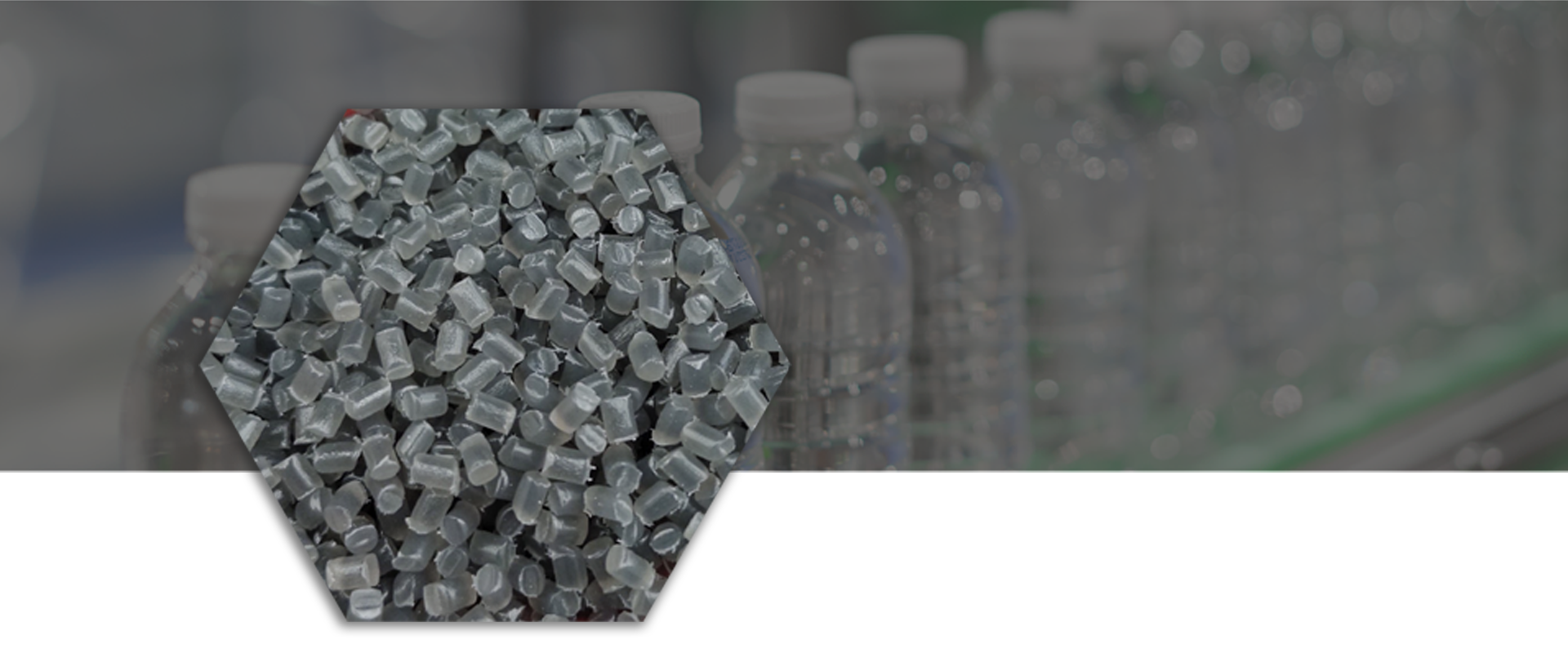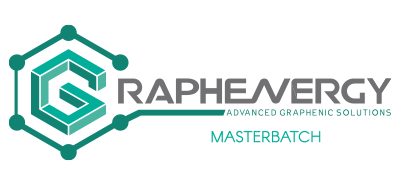
TURN YOUR PLASTICS INTO CUTTING-EDGE SOLUTIONS: DISCOVER THE POWER OF GRAPHENE MASTERBATCHES
Boost your competitiveness in the industry with our revolutionary Graphene Masterbatches, designed to boost the resistance, durability and efficiency of your products. Evolution starts here.
CONTACT US AND LET OUR EXPERTS HELP YOU
Push the limits of innovation with the power of Graphene Masterbatches.
With their ability to strengthen materials, improve conductivity and withstand extreme conditions, they are indispensable in industries such as automotive, agroplastics, electronics and more.
Increase in mechanical resistance
Increases weather resistance
Improves thermal stability
Ease of processing
Versatility for different applications
Environmental compatibility
*Results backed by certified laboratory tests.
Polypropylene Masterbatch
with Graphene Oxide
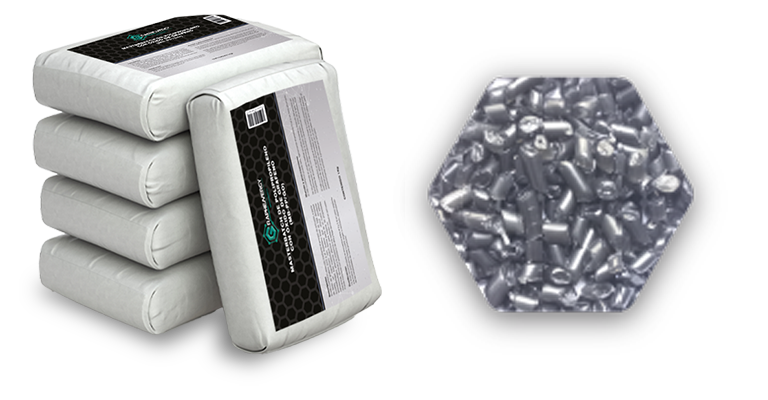
Uses MB-PP/GO is a material with great technological application opportunities, designed for use in spundbond lines and production of low denier filaments, in fast cycle injection processes and thin-walled.
Physical properties
| Density | 0.88- 0.92 g/cm3 |
| Flow index (MFR) | 35 g/10 min |
| Melting temperature | 180 °C |
| Moisture absorption (~23 °C, 50% HR) | Not available |
Dosage The recommended dose is between 2 to 5% by weight with respect to the base polymer matrix of virgin or recycled PP, depending on the needs of each product.
Polyethylene terephthalate
masterbatch with graphene oxide
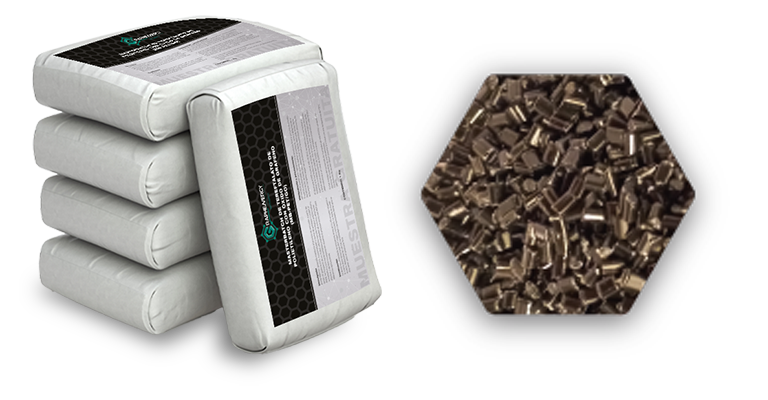
Uses MB-PET/GO is a material with great technological application opportunities in the plastics industry and can be used in injection, blow molding or extrusion processes for the manufacture of packaging products and packaging, fibers, protection barriers, reinforcement of PET-based recycled products, etc.
Physical properties
| Density | 1.33- 1.40 g/cm3 |
| Intrinsic viscosity | 0.78- 0.82 dl/g |
| Melting temperature | 245- 253°C |
| Moisture absorption (~23 °C, 50% HR) | ~0.23% |
Dosage The recommended dose is between 2 and 5% by weight of the virgin or recycled PET-based polymer matrix, depending on the needs of each product.
Low density
polyethylene masterbatch
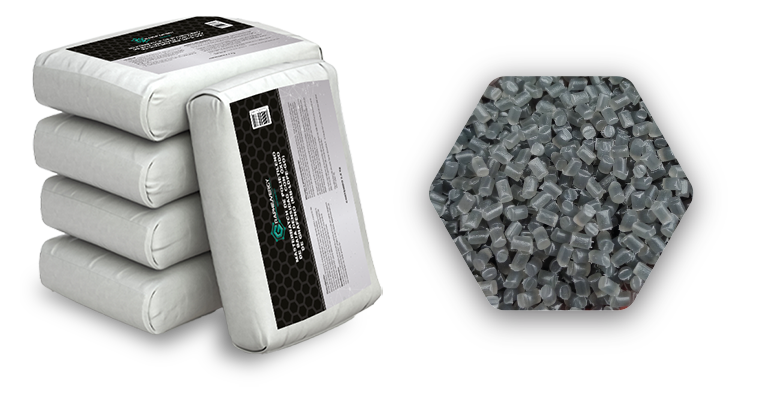
Uses As an additive and/or multifunctional reinforcement of polyolefins such as polyethylene and polypropylene in extrusion-blow molding and film extrusion systems.
The use of MB-LDPE/GO allows the development of compounds improved polymers in terms of their mechanical, thermal, barrier properties, among others.
Physical properties
| Density | < 1 g/cm3 |
| Flow index (MFR) | 2.0 g/10 min |
| Melting temperature | 110 °C |
| Moisture absorption (~23 °C, 50% HR) | Not available |
Dosage The recommended dose is between 2 and 5% in weight with respect to the virgin or recycled HDPE base polymer matrix, depending on the needs of each product.
High density
polyethylene masterbatch
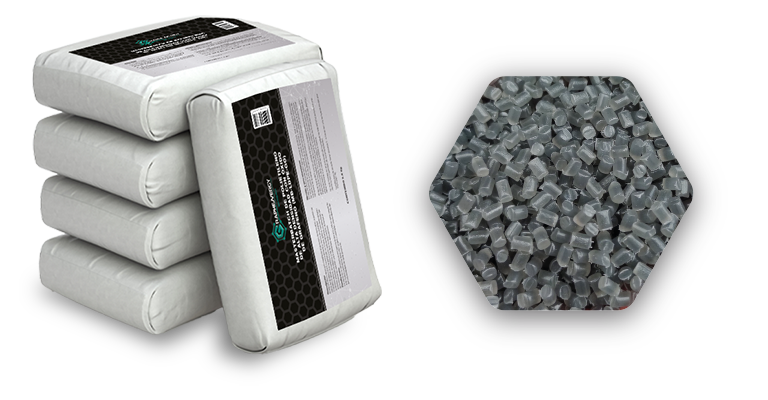
Uses As a multifunctional additive and/or reinforcement of high-density polyethylene in extrusion and blow molding systems.
The use of MB-HDPE/GO allows the development of improved polymeric compounds in terms of to its mechanical, electrical, thermal, barrier properties, among others.
Physical properties
| Density | 0.954 g/cm |
| Flow index (MFR) | 0.35 g/10 min |
| Melting temperature | 170 – 180 °C |
| Moisture absorption (~23 °C, 50% HR) | Not available |
Dosage The recommended dose is between 2 and 5% in weight with respect to the virgin or recycled HDPE base polymer matrix, depending on the needs of each product.
Linear low density
polyethylene masterbatch
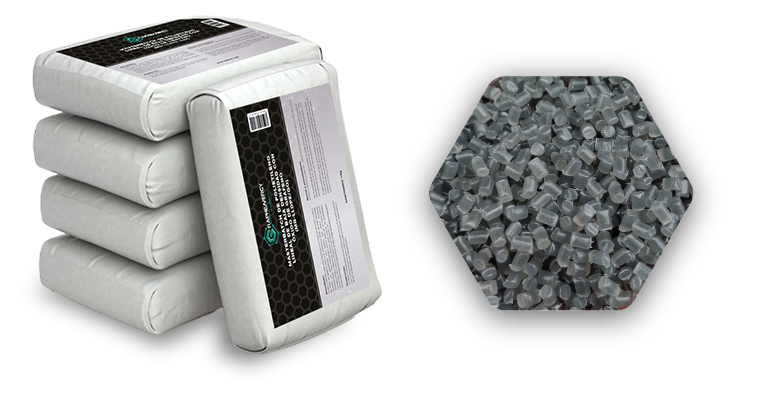
Uses As a multifunctional additive and/or reinforcement that allows the development of materials with high mechanical resistance, with better thermal and gas barrier properties.
MB-LLDPE/GO has a good capacity for mixed with high and low density polyethylene. It is a material that is easy to incorporate into film extrusion or coextrusion systems.
Physical properties
| Density | 0.9234 g/cm3 |
| Flow index (MFR) | 1.8 g/10 min |
| Melting temperature | 150 °C |
| Moisture absorption (~23 °C, 50% HR) | <0.015 % |
Dosage The recommended dose is between 2 and 5% in weight with respect to the virgin or recycled LLDPE base polymer matrix, depending on the needs of the product.

Learn about all the advances in masterbatches in the industry
View resourcesFREQUENTLY ASKED QUESTIONS
See questions- What is Graphene Masterbatch?
It is a concentrated mixture of polymer-functionalized graphene oxide. It is a new graphene additive for virgin or pristine polymers, as well as for post-industrial and post-consumer polymers, exclusively developed to improve the physical-mechanical properties of polymers, among other properties. - What are the advantages of using Graphene-based Masterbatches in polymers?
Graphene-based Masterbatches have shown significant improvements in properties such as elastic modulus, tensile strength, strength impact, electrical conductivity, resistance to UV radiation, thermal stability, antimicrobial property, impermeability and barrier properties (it does not allow the diffusion of liquids, gases or other molecules).
In recycled or post-industrial polymers, you can renew the mechanical properties lost during processing, recycling or reuse. Currently, the reuse and recycling of plastic materials are of vital importance in the transition path towards a circular economy. In this regard, the constant washing, pelletizing and reprocessing can cause the loss of physicomechanical properties of recycled plastics, therefore, by adding graphene, these properties can be restored or improved.
We invite you to consult the technical data sheet. of the product, as well as its safety data sheet. If you have any questions, you can contact us and our experts will provide you with specialized advice. - What is the recommended concentration for use in polymers?
The recommended dose is between 1 and 5% by weight with respect to the pristine or recycled polymeric matrix and may depend on the final needs of each material. That is why we recommend carrying out the pertinent tests with the product to determine the ideal concentration before its final application. - Can I use the Masterbatch with graphene in any type of polymer or plastic?
Energeia-Graphenemex, under the Graphenergy brand, has developed a wide range of Masterbatch with graphene for different thermoplastic polymers, including Polypropylene (PP), Low Density Polyethylene (LDPE), High Density Polyethylene, Polyethylene Terephthalate (PET), Linear Low Density Polyethylene (LLDPE), Polyamide (PA), among others.
Our team of experts can resolve any questions you may have about the application of our product.
On the other hand, if you require a particular Masterbatch development, do not hesitate to contact us, we can gladly work on a new development. - How is Masterbatch dispensed into polymers?
Because Masterbatch is a granular material (pellets), it can be incorporated into the rest of the polymer, mixing it in a manner safe and easy. It can be added as one more pigment in the polymer mixture, it is a product that is easy to incorporate into current extrusion and injection systems, introducing new or improved mechanical properties to the polymer or base. - Can the Masterbatch change the color of the base polymer?
In general, Masterbatches have a black coloration, due to the presence of graphene oxide (it does not contain additional colors before). Masterbatches can slightly tint the final product to a smoky tone, the higher the concentration the darker the tone of the material. However, it has been observed that, in pigmented materials with intense color, the color change is not so noticeable or is almost imperceptible.
The user is recommended to carry out tests during and after the transformation process in order to finalize the appropriate dose, according to the conditions and characteristics of the final product. - What are the industrial applications where these Masterbatches can be used?
• Packaging
• Automotive
• Electronics
• Construction
• Rubber and Plastic
• Agroplastics - What is the increase in the percentage of resistance obtained when using Masterbatch with graphene?
The addition of masterbatch to different polymers has improved the characteristics to a lesser or greater extent end of materials. It is important to carry out relevant tests with the product to determine the ideal concentration for the final application.
It has been found that the concentration of Masterbatch in the polymer can vary the results in the physicomechanical properties of the polymer to be processed, for example :
– Additivation of Polypropylene (PP) with 1% polypropylene-graphene (MB-PP/GO) masterbatch increases tensile strength (8%) and rupture percentage (29%) .
– Additivation of Polyethylene (PE) with polyethylene-graphene masterbatch (MB-PE/GO), improves tensile strength (17%), flexural strength and breaking strength ( 66%).
– Additivation of Polyethylene terephthalate (PET) with masterbatch of Polyethylene terephthalate-graphene (MB-PET/GO) 2%, better resistance to humidity, increases tensile strength (72.2%) and better impact resistance.
– Additivation of Polycarbonate (PC) with polycarbonate-graphene masterbatch (MB-PC/GO) at 3%, improves resistance to humidity and better resistance to rupture (276%). - Do Masterbatches have any use limitations during processing?
Although Masterbatches with graphene form part of a new additive in the plastics industry, they do not interfere with the processing conditions of the base or pristine polymers. That is, the incorporation of Masterbatch with graphene does not affect the processing temperature of the base polymer or the extrusion time. Masterbatches are designed to be dispersed homogeneously in any polymeric matrix, improving the final mechanical properties of the material. - Can the Masterbatches with graphene react with other additives or pigments?
All the tests and evaluations of the Masterbatches have shown to be compatible with the majority of the additives or pigments implemented in the Plastic industry. However, we always suggest that each user carry out all pertinent tests, so that they know the performance of the product under its original formulation or mixture and its processing conditions of its materials. For more information or advice, contact contact@graphenemex.com - Where can I acquire or buy Graphene Masterbatches?
You can purchase our Graphene Masterbatches through our official website. Our advisors will provide you with all the detailed information on the use, application and processing conditions of each product, as well as the purchase options. For more information contact contact@graphenemex.com.
